For trip planning information, visit the post for day 1.
I didn’t sleep well last night… Every noise brought me back from the brink of unconsciousness: “Is it a bear?! A raccoon?!” Soon, I realized the “animals” were really just sounds I made as I moved about in my sleeping bag. Still, I slept in what felt like 30-minute increments. I had to take a bathroom break in the night; I was a little nervous to leave the shelter of my tent. Isn’t that funny? My tent is made of nylon less than a millimeter thick. It would probably trap me much more easily than it would protect me. I put on my shoes, and when I stepped out I was surprised to see the landscape brightly lit. I had my headlamp on, but I barely needed it because the Moon was reflecting so much light onto the rocks and trees. There were no animals to be seen, and, after taking care of business, I went back to sleep until sunrise.
Yosemite Backpacking Loop: Over Red Peak Pass
June 24, 2015 | 15.57 mi | +2961′ / -3962′ | View on Map
Once awake, I heat water on my stove. It only takes a few minutes to heat a cup of water to boiling, and soon enough it is bubbling and ready! I retrieve my bear canister from its hiding spot (it is untouched, of course) and fish out an oatmeal packet. This morning is cranberry orange oatmeal with pecans. I pour in the boiling water, seal the bag, and let it sit for a while. The mosquitoes are already out, ready to suck my blood, so I work on taking down my tent and packing up my sleeping bag while the oatmeal is “cooking.”
I grab my spork and oatmeal and walk a little ways away from the lake to eat breakfast; distancing myself from the water seems to help a little, and there’s a slight breeze to blow the bugs away. I’m glad I packed double portions of the oatmeal because half of what I ate would not have been enough for breakfast.
I finish packing up camp and hit the trail at about 7:00. The sun is just coming up over the mountains to the east, and I snap a photo of Star King and Half Dome.
My trail today will take me past Lower Ottoway Lake, over Red Peak Pass, and down the other side to the Triple Peak Fork of the Merced River. I’m planning on camping towards the higher end of the Triple Peak Fork; my research indicates that lower parts of the canyon are less suitable for camping.
The road from Upper Merced Pass Lake to Lower Ottoway Lake isn’t terribly steep, but it is uphill and gets my heart going. My legs feel a lot better than they did last night, which is encouraging! I walk past several small cascades and stop to take pictures but am strongly discouraged by the mosquitos: they land on my hands, arms, face, and neck and start biting… just go away stupid bugs!!
Ottoway Lake is further up the hill than I expected; I probably should have looked more carefully at the map before setting out. I eventually get there and am struck by how pretty it is! It’s a perfect alpine lake. Although it’s only 8 or 9 in the morning, I already stink, so I decide to wash my clothes and myself in the icy cold water. I strip down to just my compression shorts and wade in. In a brief moment of determination, I submerge my torso and head, but quickly pull myself back out: it’s cold! I scrub my armpits and legs to wash away the BO and then take a few minutes to submerge my clothes and rinse them out. I don’t have any soap, but washing out the dirt and sweat goes a long way.
Once I’m done rinsing, I put my pants and shirt back on to shield myself from the bugs, but they aren’t nearly as aggressive up here and stay away from me. I hang a few clothing items on a tree next to the water and eat a blueberry Cliff bar (my favorite!) while I snap some pictures. The sun is shining, so I soon dry off and hit the trail again. There are lots of trees and green plants near the lake, but the trail quickly climbs up above the timberline and most of the plant life disappears.
There is still snow up here above Ottoway Lake (alt. 9,700 ft) but my path doesn’t take me through any of it. After an hour or two, I’m far above the lake and trees, and the trail turns into steep switchbacks. I’m walking on loose shale and coarse gravel, which is difficult to climb in; my feet slide backward a little with each step. I stop at every other turn to catch my breath. The trail is steep, but the high altitude must be affecting me because breathing isn’t usually this much of a big deal.
I eventually reach the top of Red Peak Pass and stop for a celebratory break. I mixed up a bottle of Gatorade a while ago, so I finish that on top of the mountain. There’s a stiff breeze, and the cold air feels nice. The view is pretty awesome up here at 11,100 feet!
One might think that the uphill journey is the hardest part, but I think a strong argument could be made that the downhill journey is equally, if not more, difficult. Going up strains your muscles and gets your heart going, but going down puts continuous stress on your hips, knees, and ankles. It just hurts in different ways.
I descend Red Peak Pass on the North side of the mountain. In the Northern hemisphere, you find a lot more snow on the North side of mountains, and this one is no exception. Just a few paces from the pass, I am faced with a snow drift across the trail. The two men I met last night have already been this way; I see their footprints in the snow, but it must have been much colder when they passed through because their prints don’t sink into the snow at all. When I step out onto the drift, I sink up to my hip… Luckily, the drift is only a few feet long and I don’t sink as much on my next few steps.
The trail winds its way down the red, rocky slopes of the mountain for several miles. A few more drifts get in my way, but I traverse them without sinking into the snow. I fill one of my bottles with snow at one of these drifts and enjoy drinking from a slushy during the descent. The snow is melting, of course, and I can hear it gurgling through the rocks beneath my feet. The trail isn’t a solid surface so much as a collection of rocks with small spaces between them; the water has plenty of avenues to flow downwards. There are pools of water dotted along the slopes. The red rock has an even richer color when it is wet, and the bottom the pools is a blue-gray color; it looks like clay.
After an hour or two descending through the rock and gravel, I reach the timberline. My stomach is starting to cramp again… how annoying. I loosen my hip strap and hope it will go away. I drink some more water and continue down the trail. Going down is much harder on the feet than going up. I suppose if you were really careful and used your muscles to take gentle steps down, you could alleviate some of the impacts on your feet. All this is just to say that they hurt a lot. I stop at a little brook and soak my feet for a few minutes. There aren’t many bugs up here, I think because I’m so near the timber line and the barren world above it. I spend a few minutes with my feet in the water and then continue downwards. I don’t make it far before I develop a nose bleed. Being from Indiana, my sinuses are used to humid air and coming out west inevitably dries them out to the point that they bleed really easily.
I stop at a gorgeous little lake to take care of the bleeding: stuff some tissue up your nose and apply pressure for 5 – 10 minutes. While I’m waiting for the bleeding to stop, I fill one of my water bottles and wait for the purifying drops to complete their chemical reaction. It’s wonderfully quiet up here; I don’t even hear any birds. There aren’t any mosquitoes either, so I’m able to relax for a few minutes. I wouldn’t mind staying here for a long time. 🙂
The vegetation at high altitudes seems like it has a very fragile grasp on life. The soil is rocky and loose, so I don’t expect the plants are hanging on by much. Large, black ants are the most common creature up here. What do ants eat? Other bugs, right? I guess there are plenty of bugs. The smell is one of my favorite things about being up high though. It’s this wonderful scent of dry pine needles and the occasional whiff of watercress or mint near the lakes and streams. The air seems cleaner… it probably is cleaner.
Anyway, once my nosebleed stops, I continue on my way. My stomach is still cramping, much to my annoyance. I stop and eat lunch (crackers, peanut butter, and dried apples), but that doesn’t seem to help much. So, I suck it up and keep hiking. The trail is still heading downhill, but I’m off the steeper mountain slopes and my knees and ankles appreciate the shallower grade, though my feet still ache. I notice some clouds forming in the sky; they’re quite small, but seem to be growing. As I hike, I keep my eye on them because I’ve read about how afternoon thunderstorms can form quickly in the high country. The clouds seem to be dissipating as quickly as they form, however, so after an hour I stop worrying about rain and lightning.
Not much later, I come to the trail crossroads at the Triple Peak Fork of the Merced River. Little to my surprise, there are lots of mosquitoes here by the water. I refill my water bottles anyway and take a few pictures. This is where my original plan says I’ll be camping for the night, but like yesterday, it’s early afternoon and I have hours left before dinner time. I decide not to stop and hike about 4.5 more miles to get closer to Merced Lake and Little Yosemite Valley. My stomach discomfort and mosquito troubles today reinforce my desire to shorten my trip from the original 7-day trek to a more manageable 4-day trek. I figure if I make it a few more miles today, I can hike all the way to Little Yosemite Valley tomorrow. The day after that, I’ll hike half dome and descend back to Yosemite Valley and escape these bugs and other discomforts.
My trail from this point heads down the creek, towards Washburn and Merced Lakes. The map seems to indicate that the road will be more or less level for the next few miles and sure enough, it is. A level trail is my favorite trail; it’s much easier to walk on than uphill or downhill. I make excellent time and cover nearly three miles in an hour. Of course, the level trail doesn’t last and soon I’m once more faced with rocky, cobblestone switchbacks (going down). The good news is this means I’m close to my new destination: a couple of footbridges marked on the map.
The Triple Peak Fork has grown in size as I descended and is getting quite large, hence the need for footbridges. I imagine the water is much higher in the spring when there’s more snow melting. There are some huge, dead trees near the trail, and other huge, live trees as well.
The slopes of this valley are smooth, solid granite and the water flows down them like water on a driveway: in wide, flat ribbons. If I wasn’t alone, I might try sliding down them like a water slide, but I don’t want to risk anything when no one is around to help. Although I saw several people on the trail yesterday, I haven’t seen a single soul today. I kept expecting to catch up with the men I met yesterday, but all I’ve seen is their footprints.
I find the first footbridge and start looking for nice campsites. Whenever I see a promising area, I take off my pack, stash it behind a tree, and take off to check it out. I learned my lesson about walking extra distance with a pack yesterday when I went to find my dropped pad. I find a nice site a little further down the way. It’s on the opposite side of the river from the trail, but there is a large, fallen tree that I can cross on. It’s about 5 feet above the water, and I stick my arms out to either side to help me balance as I cross. Crossing without the pack was easy; with the pack is more difficult because my center of gravity is higher, but it’s still manageable.
Setting up camp doesn’t take long, and there aren’t many bugs here – I tested the site before bringing my stuff over by standing still and waiting for the bugs to swarm me. When they didn’t swarm me, I decided there must be fewer of them here. By the time I finish setting up my tent, though, there are plenty of mosquitoes. Word must have spread that a human is here. There isn’t a fire ring nearby, so I decide not to make a fire and instead boil water on my stove. I can’t stay still for long, or I’ll be eaten by the mosquitoes, so I pace around while the water heats. Even standing still long enough to pour the water into the zip lock back and seal the thing results in a few bug bites to my arms. I put on my windbreaker to shield my arms and hands; I’m already wearing a hat and pants, so the only exposed skin is my face. Hopefully, the hat will discourage them from landing there.
I let my dinner sit and absorb the water for 10 minutes and then dig in. I’m having Veggie Couscous again, and it’s delicious and filling! Those recipes I found online are top-notch. I walk around while I eat to avoid the bugs and then hurry to put away my food and cooking kit; the bugs are merciless. For some reason, I’m able to escape them when I go right next to the running water and wash out my socks. I take a few photos of the natural water slides while I’m sitting there. The setting sun casts beautiful, warm light on the mountains around my campsite. 🙂
After relaxing for a few minutes near the water, I walk back to my tent (oh hello, bugs from Hell…) and quickly get ready for the night. I stash my bear canister 30-40 paces away and quickly use the bathroom. If you think pooping in a hole is bad, try doing it with mosquitos landing on your bum. I escape to my tent, zip the door, and spend some time writing in my trail journal. I use my pocket knife to sharpen a pencil, and I have a small pile of shavings next to the door.
Although I hiked about a mile less today than I did yesterday and mostly downhill, my feet and legs are much sorer than yesterday. I suppose yesterday’s fatigue is probably adding to today’s. It’s totally manageable, though. If you’ve ever done a long hike or run, you’re familiar with this type of pain. It’s a dull ache, not anything sharp, and nothing to be concerned about as long as you take care of yourself. I packed some ibuprofen, so I take a few and then stretch and go to sleep.

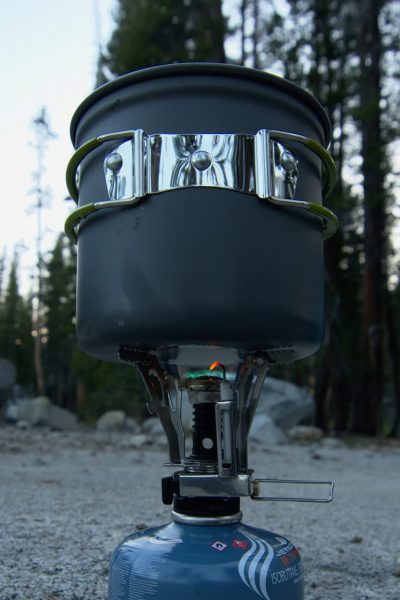
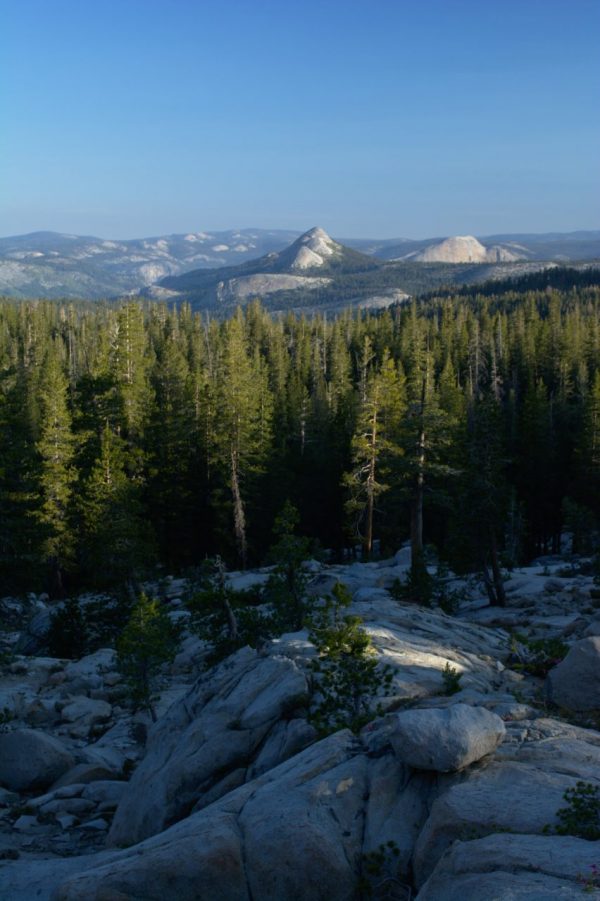

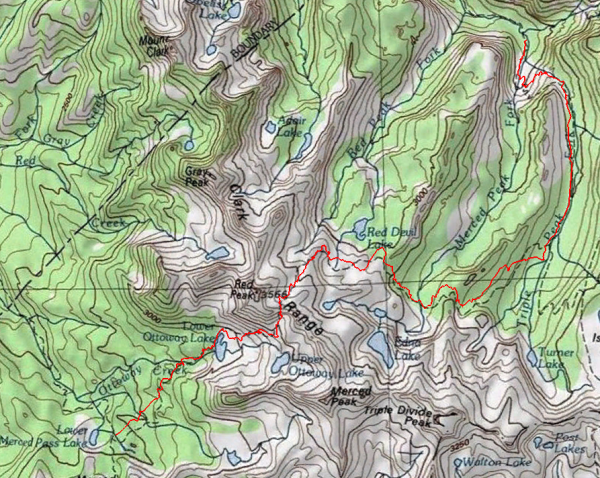
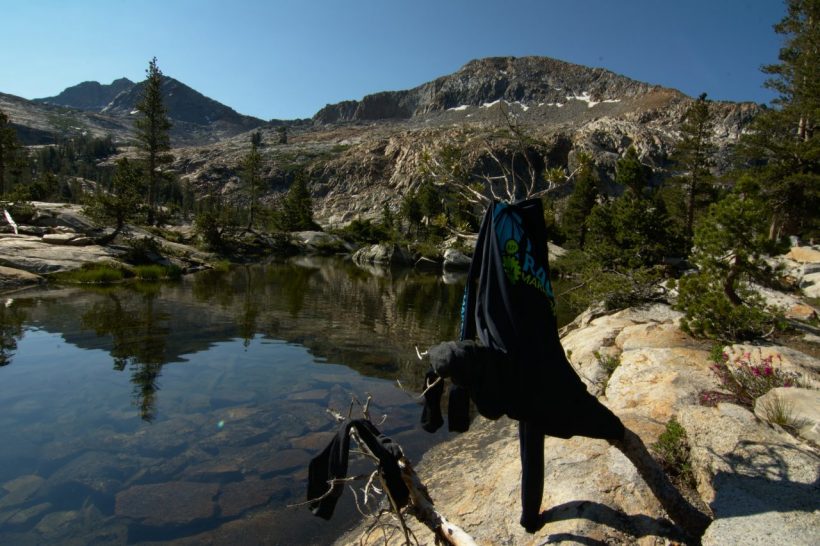




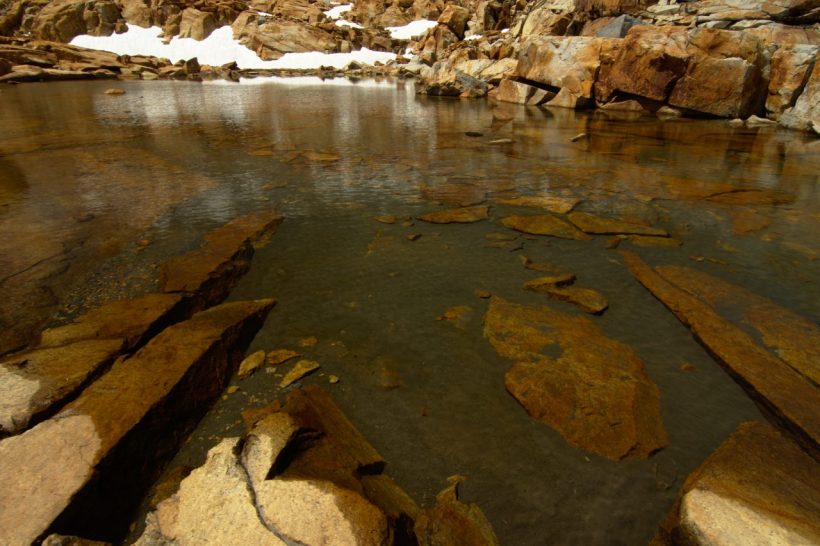

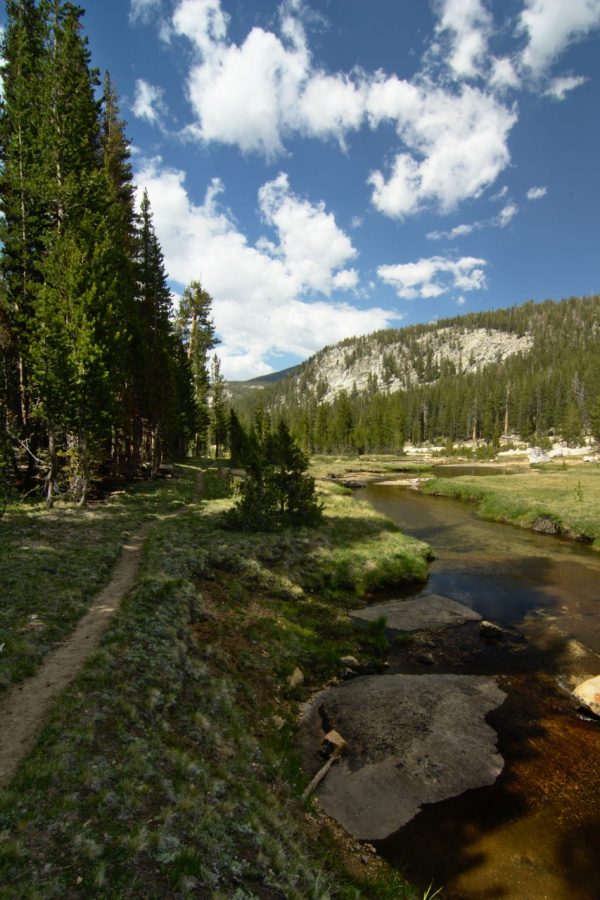


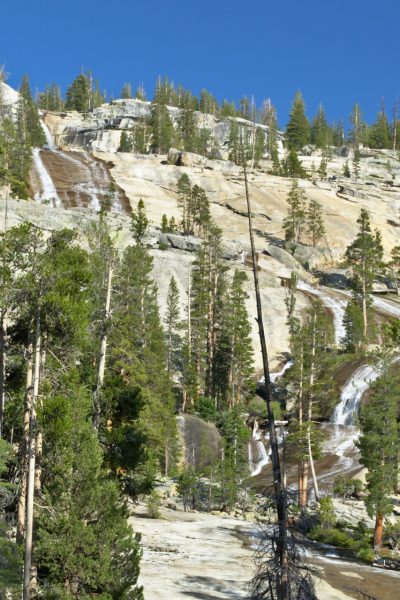
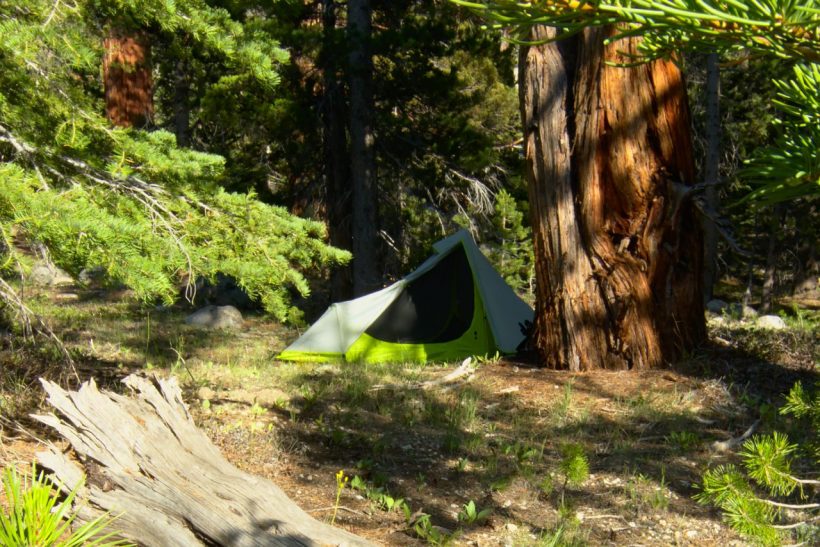
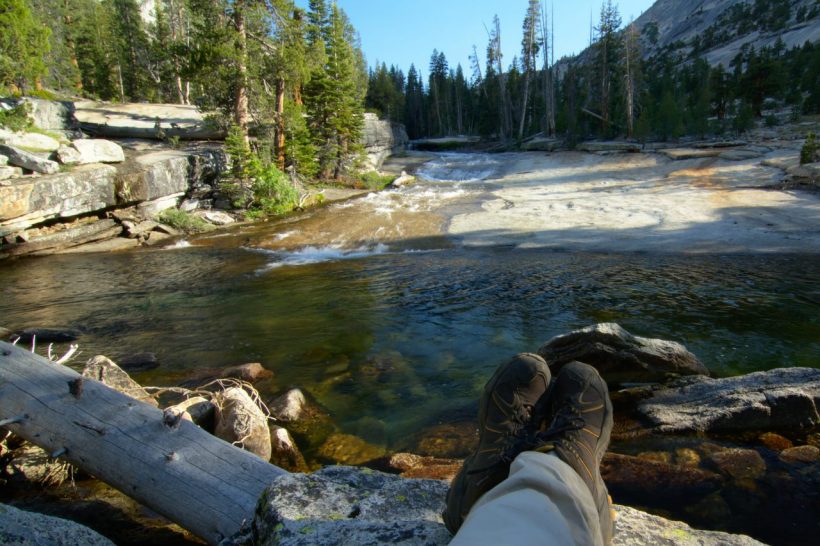
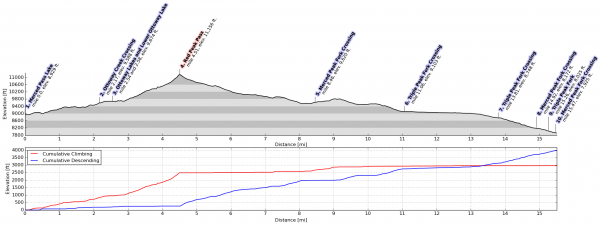
Dad 9 July 2015
You’ll never forget this trip, will you? I sure enjoy reading your thoughts.